-
About
- About Listly
- Community & Support
- Howto
- Chrome Extension
- Bookmarklet
- WordPress Plugin
- Listly Premium
- Privacy
- Terms
- DMCA Copyright
- © 2010-2025 Boomy Labs


 Alpesh Patel
Alpesh Patel
Listly by Alpesh Patel
Hi-Tech CADD Services offers CAE analysis & consulting by CFD analysis services & FEA modeling services for automotive, process, building/construction & heavy engineering industry.

Industries that manufacture high-voltage cables are required to consider important design parameters when designing power transmission systems. One key aspect is the ability to deliver specified quantity of current without exceeding permissible temperatures.
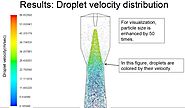
Most often, computational fluid dynamics (CFD) is seen as a replacement tool against experimental investigations. Engineers try to calibrate the results obtained through CFD to match exactly with the real world conditions; however, the reality is that CFD results always differ.

Studying the effects of airflow over an object is of a paramount importance for design considerations. To understand the impact of the aerodynamic forces on engineering objects such as automobiles, aircrafts and locomotives, it is required to set up external airflow conditions that resemble actual physical scenario.

Wind turbines have seen a remarkable growth in its application worldwide, requiring to understand about energy produced and power output from economical perspectives as well to ensure wind energy as a competitive energy source. While aerodynamics is a major deciding factor for the turbine performance, developing a numerical model is quite challenging due to complex aerodynamic environment.
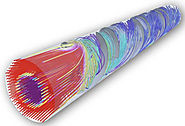
The potential of CFD simulations is increasingly being exploited in many modern engineering fields. However, the use of CFD techniques is more restricted to manufacturing domains, to study and optimize the performance of equipments and systems involving fluid flows. Yet, recent advancements in scanning and computing technologies have opened a whole new set of opportunities in biomedical engineering field.

A chassis provides the much needed support to the vehicle body, and bears number of loads in order make sure that they do not get transmitted inside the cabin. In general, the chassis has to accommodate five loading conditions that include bending, torsion, combined bending and torsion, lateral and fore & aft loading.

Products are getting smarter every day, and are becoming more personalized and largely different from conventional designs. The modern engineering community as such has to rely on new set of design and development tools against the conventional ones.
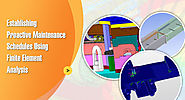
Any engineered product’s success rate hugely depends on the amount of useful life it delivers. As conventional designs continue evolving for the sake of improving performance, it has become mandatory for design engineers to adopt new ways to determine and increase product life, while downsizing and reducing the development cost.

The development of offshore structures has been phenomenal over the last few decades. The key driver for such development is primarily due to the constant urge to explore deep waters due to the ever-increasing oil demands. The continuous rise in the need of deep water developments and exploitation of shallow water reserves has invoked a new range of offshore structures.

Exhaust gas streams emitting from industrial process plants consist of harmful pollutants, which are carried away for sufficiently large distances from source. The control of these pollutants dispersion is mandatory to avoid spreading of toxic gases into urban areas nearer to plant locations.

The results of finite element analysis hugely depend on the type of element used to convert the geometry into smaller elements. While in most 3D simulations, solid elements are required, it is found that these elements do not give desired results for thin and slender structures.

The continuously growing demands from the developing regions of the globe and a pressing need to develop economical automobiles are keeping manufacturers busy in seeking a profitable position in the market.

New product in the market is often most crucial for manufacturers, especially in a cut-throat competitive scenario. According to a recent research study from Aberdeen Group, almost 37% of total revenues are generated from new products, making it extremely important to launch the products on time with the required quality to gain maximum profitability and acceptance rate from the customers.

From simple household uses to high-end industrial applications, pumps remain a preliminary device make our lives easier. It’s nearly impossible develop many equipments and devices that rely on pressurized fluid streams without utilizing pumping systems. Because of its highly important role, it is evident to place a firm focus on its design for a particular application.

Finite element analysis has always been used as a third dimension in product testing apart from experimental and analytical tests. The reason why FEA alone is not employed as a standard testing tool is primarily because it is an approximation of the partial differential equations and often consists of residuals that always keep the results from being 100% accurate.

Computer simulations are applied everywhere in engineering and it has placed a huge amount of burden on top level managers responsible for taking critical designs. Prior to the simulation era, making engineering decisions were simply based on few physical measurements, some handful of experimental data and engineering drawings.
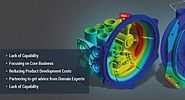
Computational Fluid Dynamics (CFD) has become more of a mainstream design testing tool for most manufacturing organizations. The possibility to quickly assess the design prior to actual prototype reduces much of the design time, making it highly advantageous for organizations eyeing for faster product development. It is very much possible to find a team of CFD analysts in many organizations, playing with the fluid flow parameters to evaluate the product designs.

Computer aided design and analysis is widely being practiced in the engineering community. However, as new FEA tools continue to make simulation process easier, it has been increasingly tried and tested by novices. While modern tools have attempted to make the life of an analyst much easier, it is simultaneously raising the threat of its misuse.

It is inevitable for design engineers to adopt a probabilistic design approach to devise equipments, considering invariability and uncertainty of equipment failure. The present deterministic design approach neglects the failure risks associated with the random nature of most input parameters.
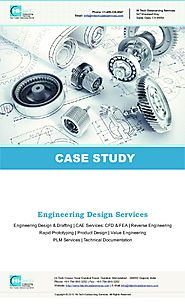
With the help of effective computational fluid dynamics analysis; it is possible to expedite well-organized and swift simulation of heat transfer. Fluid flow analysis within the component, structure or a product helps to regulate the performance level across different fluid forces.
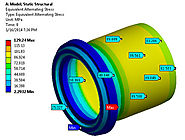
Process equipment manufacturer from India approached Hi-Tech to seek assistance in evaluating the design of their newly developed valve component subjected to internal pressure loading cycles using simulation techniques.
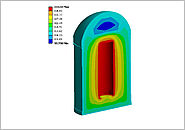
A leading manufacturer of thermal Radiation Detection System for power plants consulted Hi-Tech to virtually test their new radiation detection system design, considering thermal parameters. Their prime objective was to reduce physical tests by incorporating virtual simulations early during the design phase.
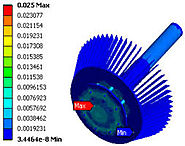
The client is a leading manufacturer and supplier of aftermarket brake components and systems for everyday cars, work duty vehicles and high performance vehicles under different labels. Through continuous innovation, the manufacturer has brought significant improvements in braking technology and has earned four patents along the way.
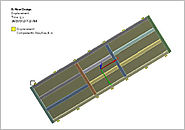
A finite element model for the RTO base was developed and modal analysis was first performed to extract first natural frequency of the base. Subsequently, seismic qualification was done using equivalent static analysis loading case, considering the first natural frequency and seismic spectrum. The results showed that the base design was safe to sustain the stresses during seismic events.

Aerodynamic studies on vehicles have become a mandate for manufacturers. Whether using wind tunnel tests or using CFD simulations, studying the impact of air flow over the exterior body of the vehicle is crucial, in order to reduce the drag forces and improve fuel efficiency.
